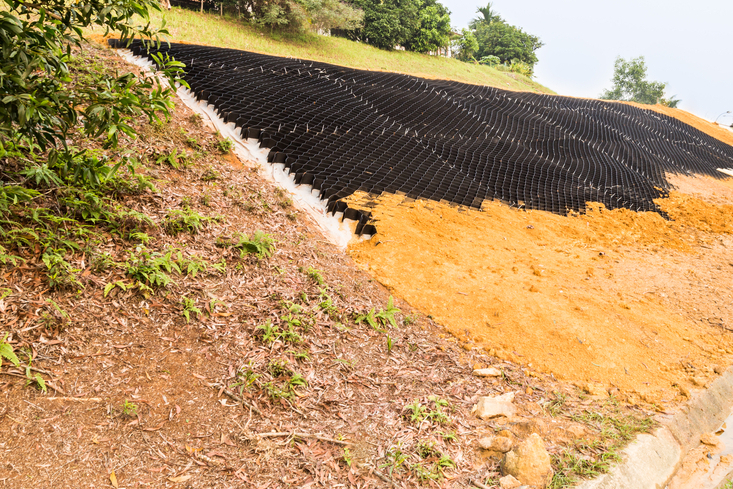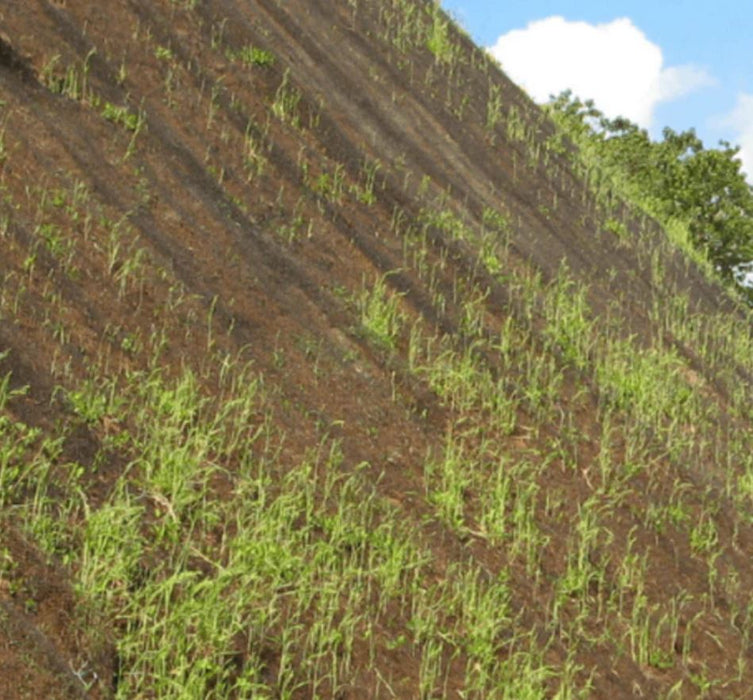Securing Your Website with Memphis Erosion Control Solutions silt fences
Ideal Practices for Erosion Control in Construction Projects
Are you working on a building and construction job and concerned about disintegration control? Look no more! In this short article, we will direct you with the most effective methods for protecting against erosion on your website. You'll uncover 5 necessary techniques, effective sediment and overflow monitoring methods, key factors to consider for incline stablizing, and ideas for safeguarding vegetation and soil. We'll additionally look into the importance of carrying out correct water drainage systems. Prepare yourself to tackle disintegration head-on and make sure the success of your building task.
5 Necessary Disintegration Control Techniques

To efficiently manage disintegration on your building website, you'll need to implement essential strategies such as slope stablizing and debris control measures. Incline stablizing is crucial in avoiding dirt disintegration on steep slopes. You can attain this by using techniques like terracing, which includes producing horizontal steps on the slope to decrease water flow and promote the absorption of rainwater. Another reliable method is the use of erosion control blankets or mats, which are placed on the slope and help preserve soil bits while enabling vegetation to grow. Sediment control measures are additionally important to stop debris runoff right into neighboring water bodies. One reliable technique is the setup of silt fencings along the perimeter of the building and construction site. These fences serve as obstacles, capturing sediment-laden water and allowing it to settle prior to it gets to the water bodies. Additionally, you can utilize debris basins, which are momentary retention fish ponds made to catch sediment and enable water to gradually drain pipes off. Applying these vital disintegration control techniques will help reduce the unfavorable ecological influence of your construction project and make sure conformity with policies.
Reliable Debris and Overflow Management

You can effectively handle debris and drainage in your construction task by executing appropriate erosion control procedures. Debris and overflow monitoring is crucial to avoid erosion and safeguard the surrounding atmosphere. One efficient action is the installment of silt fencings along the border of the building and construction website. These fences help to include sediment and prevent it from entering close-by water bodies. One more crucial method is the application of erosion control blankets or mats. These blankets offer a protective layer on bare soil, reducing the impact of rainfall and stopping erosion. Furthermore, using sediment containers or debris traps can assist to record debris and avoid it from going into stormwater systems. Normal upkeep of these procedures is crucial to guarantee their efficiency throughout the construction project. This includes cleaning up and examining debris containers and consistently changing silt fences and disintegration control blankets as needed. brightview landscape development By implementing these disintegration control procedures, you can effectively take care of debris and overflow in your construction task, reducing the impact on the atmosphere and adhering to regulative needs.
Trick Considerations for Incline Stabilization
When thinking about incline stablizing, it is very important to examine the surface and identify potential areas of instability. You require to carefully analyze the incline's characteristics, such as its drain, structure, and angle patterns. Seek indications of disintegration, such as revealed origins, splits, or down dirt. These indicators can provide you an idea of where stabilization procedures might be necessary.
Once you have actually recognized the unsteady areas, you can start applying measures to maintain the incline. One typical technique is the usage of preserving walls or terracing to produce a series of flat steps, which can help disperse the weight and protect against additional erosion. One more option is to grow plants on the slope, as the roots can assist anchor the dirt and control erosion. Additionally, mounting disintegration control coverings or mats can offer prompt security while plants comes to be well-known.
It's vital to on a regular basis keep an eye on the stabilized inclines to ensure their efficiency. Watch out for any type of signs of movement or erosion, and take prompt action if needed. Normal maintenance, such as evaluating and repairing any type of damaged steps, is additionally essential to make sure long-lasting stability.
Best Practices for Plant Life and Soil Security
One efficient means to safeguard plants and soil on inclines is by frequently examining for indicators of erosion and taking prompt action if needed. see here now Start by inspecting the incline for any indicators of erosion, such as subjected origins, bare dirt spots, or sediment buildup at the bottom. Implement disintegration control actions such as setting up erosion control blankets, mulching, or also constructing maintaining walls if required.
Applying Proper Drain Equipments
To efficiently apply appropriate drain systems, it's essential to think about the incline gradient and dirt type. Comprehending these variables is important when it comes to handling water circulation and avoiding erosion. The slope gradient plays a substantial duty in determining exactly how water relocates throughout the land. Steeper inclines can bring about faster water flow, boosting the threat of disintegration and flooding. On the various other hand, gentler inclines permit water to move much more slowly, reducing erosion capacity. By examining the slope gradient, you can create an efficient drain system that fits the natural water motion.
Sandy soils often tend to drain faster due to their crude texture, while clay dirts have a slower drainage rate due to their portable nature. Furthermore, considering the dirt qualities aids avoid waterlogging, which can lead to inadequate plant growth and damages to frameworks.
Verdict
Finally, when it comes to erosion control in construction tasks, you have to adhere to these best methods. Apply effective sediment and drainage management methods to avoid pollution. Think about incline stablizing methods to make certain the stability of the website. Secure web plant life and soil by using suitable steps. Finally, develop appropriate drain systems to handle water flow. By adhering to these vital practices, you can successfully manage disintegration and guarantee the success of your building and construction job.
To efficiently regulate erosion on your construction website, you'll require to implement crucial methods such as incline stablizing and debris control measures. Incline stablizing is important in stopping dirt erosion on steep inclines. An additional reliable strategy is the usage of erosion control coverings or mats, which are positioned on the slope and aid retain soil bits while enabling greenery to expand. One more alternative is to grow vegetation on the slope, as the roots can assist anchor the soil and control disintegration. Implement disintegration control steps such as installing erosion control coverings, mulching, or even constructing keeping wall surfaces if needed.